Why Edward Cullen is a much bigger threat than Dracula
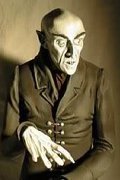
Look at that guy in the picture on the right. Just look at him. If you encountered that guy at any time in any place, you'd be like, "Hey, this guy is a fucking freak."
Yet in the 1922 movie Nosferatu, which as far as I know is the first vampire movie ever made, people interact with him as if he's merely a bit eccentric. They are actually surprised when he tries to bite them.
There's this one scene where the hero accidentally cuts his hand and our guy Nosferatu over here suddenly tries to lick his blood. I don't know about you, but it doesn't matter whether or not I believe in vampires, if a dude licks my blood, I'm out of there.
No modern audience can take this guy seriously.
So what, though, right? That movie was made back in the day when people were just not as good at making movies, so it's all just fucked up and has nothing to do with the way we look at vampires today.
Wrong. So very wrong. You have much to learn, grasshopper.

It's pretty easy to dismiss old movies as just kind of lame because they just weren't as sophisticated as we are now about storytelling. People often think that back in the day, writers were held back by quaint social conventions that distorted storytelling to the point where it loses any relevance outside of its time.
Which can sometimes be true. Like how on the Dick Van Dyke whow in the 1950s, you had a married couple that slept in separate beds, because god forbid that anyone watching suspect that two married adults might be fucking.
It's not an all or nothing thing, and if you shake the rust off a bygone zeitgeist, you can find some stories about the human condition that are true pretty much all the time.
If you do, you'll see why Nosferatu makes more sense as a vampire than just about all the vampire characters that you see today. It's got nothing to do with the special effects or whether they look like monsters or members of a teen boy band.
It has everything to do with the essence of what vampires are in real life.
At their best, vampires, like other horror, touches us because it connects to a real fear. No one needs to be actually scared of undead Goth-looking people who want to bite your neck, because they don't fucking exist, no matter how much the fans of Anne Rice novels try to masturbate them into reality.
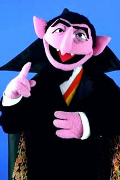
What is real, though, are people who seduce us but ultimately take from us. Have you ever been in love with someone who cheated on you, left you abruptly, or used you? If you have, you know how much it hurts. How it can leave you feeling dead inside. That's something to genuinely fear in life.
You can even be "turned" by such people. I've been there. You can be so hurt by having your heart betrayed that you become callous and end up doing to someone else what was done to you.
Vampires represent a very real monster that exists in our world. Vampires don't come out of the graves at night to bite us, they come from within people who have lost a bit of their soul. People who, for a variety of reasons, have lost some of their capacity for empathy, and their insecurities have opened a gaping void that they hope to fill with your time, your attention, and maybe even your love.
People who you would avoid if it weren't for the fact that they are pretty, or "cool," or rich, or famous, or in whatever way have something that deceives you into thinking they are where you need to be.
The desire to be with people that ultimately only take from us and sap us of our time and energy is fairly constant in human nature, which is why vampires have stood the test of time in our fiction. On the surface, it may not look like it, because vampires back in the day seemed to be so removed from our social lives. Which, back then, was kind of the point.
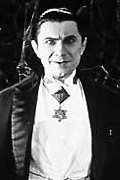
Take a look at this guy on the right here. That's Bella Lugosi as Dracula in the movie of the same name in 1931. He pretty much sealed the deal on the archetypal vampire image. A cultural meme so strong that it goes beyond horror into being a hollow costume, completely removed from anything to fear from their fundamental nature. Like The Count on Sesame Street, or Count Chocula on the General Mills cereal of the same name.
Lugosi spoke with a Hungarian accent that embedded itself into the archetype. He wore old style European aristocratic clothes. He's from the old world, and like a mammoth at the end of the ice age, he's a relic that is just on the verge of losing relevancy.
He comes from a class of people that used to mean something. The lords, the dukes, the counts, the people who owned land and lived in castles going back a couple hundred years before him.

Unlike today where the media pushes into your face images of the rich and famous whether you want to see them or not, at that time you might not ever know what the king looked like. Maybe not even the face of the lord who owned the land you tilled. The aristocracy were from a different world.
If there was some occasion where you might interact with a member of the ruling classes, or maybe even just catch a glimpse of them riding by, their clothes and hair would look weird. Their mannerisms, their way of speaking, it would all be nothing like the people who lived in your village. A lot of it was probably deliberately contrived by the upper classes to differentiate themselves from the peasantry.
One thing you did know about him, though, was how he survived up there in that castle on top of the hill. Through the taxes he imposed on you, levied on the blood and sweat of your labour.
Living large in a big castle, feeding off the toil of the surrounding people, dressing in finery. The metaphor is obvious.

When the hero in Nosferatu is surprisingly blasé about how fucking weird the count is, it's because he expected that a lord of Nosferatu's stature would be different and weird. All the rich and powerful were fucking weird. Still are, actually.
The seductive pull that made them so dangerous was a factor then, too. There's a reason why most fairy tales end up with someone who was a peasant ending up being married to a prince or princess. The peasants might not have liked the lord, but it would be sweet to be one, wouldn't it? Beats the hell out of digging for potatoes in the winter, or whatever shitty things peasants had to do.
Think what happens to Cinderella after she is swept off her feet by the prince. She's living every little girl's fantasy, but at the same time, her old friends, her family, and the life and values she used to have are most likely swept away by her indoctrination into a class of people who do not mix with the peasants, and live by rigid rituals.
The vampires of old represented people who wanted to take from you and decieve you with seduction, just like they do today. It's just that the taking and the seduction was done across social classes.

These days, class structure is far more fluid. The sense of who it is you need to be with to complete you is on a much more personal scale. It still happens that there are people who may want to give up a part of their soul to be with the rich, famous, and beautiful.
But people also yearn for relationships with people who just aren't good for them. Relationships with people who are pretty, or rich, or cool, but are ultimately insecure, immature, or selfish. People who look good on paper, but in reality are manipulative, demanding, or outright abusive.
The vampire mythology was in a kind of limbo for a good part of the twentieth century. Monster movies of all genres went through phases of being campy, exploitive, or gory, and vampires were buffeted around without much direction of their own for few decades at least.
There didn't seem to be much use for this kind of corny archetype that had all these obscure rules like sleeping in the dirt from their original grave, and silly powers that cried out to be belittled with humour, like the ability to turn into a bat.
This floundering was because less and less, as archaic European structures of class and power gave way to the American model of celebrity and wealth, vampires didn't seem to represent much anymore. A lot of stories revolve around killing the last of the vampires, or vampires trying to make the transition to the new world.
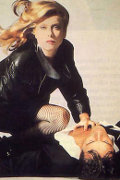
A turning point, I think, was The Hunger. It may not be the first or only movie to breathe new life into the vampire genre, but I think it is the clearest.
The vampire in that film, Miriam Blaylock, was the perfect bridge. She came from old world money, but hung out at the hippest clubs looking for victims. It was no small coincidence that her dying lover was played by an idol rock star, David Bowie. They also did away with pointy teeth and changing into bats. Most importantly, though, it was about being in love. The tragic character played by David Bowie allowed himself to be strung along by promises that the vampire couldn't keep.
Metaphors aren't necessarily decided upon by anyone, they ensue from the mixing of memes throughout our culture. It's not as if anyone suddenly said "Aha, I get it now! This is what vampires mean in a modern era!." I think that what happens is that writers experiment as they influence and are influenced by the times they live in, and when an idea catches fire, it takes off.
From around the eighties and onward, vampires stopped prancing about in clothes from long dead cultures, and started showing up in the homes, high schools, and night clubs with more personal relationships on offer.
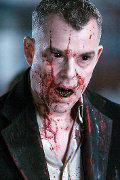
You can see two types of vampire today. On one hand, there are vampires who don't do much except have every intention of biting people until ultimately they get killed by the hero. They may be vampires in name, but really they are interchangeable with any other kind of zombie, demon, monster, or whatever. They are plot devices to further action, no metaphors to see here, move along. Like the vampires in 30 Days Of Night.
The other archetype of vampires is the one that makes True Blood, Twilight, or Buffy The Vampire Slayer wo popular.
In these stories we find the vampires who are seductive, but it's in their nature to feed off of you.
There's a problem, though. The vampires in these stories aren't just seducing other characters, they are seducing us, the audience.
Before modern mass media, fairy tales and stories of monsters were usually told partly to pass on messages. Nobody sits down and decides what the messages are, the messages ensue from the telling and retelling of stories that carry the memes that help the community thrive.
Today, though, stories come from people who don't have much intention beyond entertainment. That doesn't mean we don't find meanings in the stories we surround ourselves with, and are compelled to partly use them as templates for how we view the world. It's just that now the intended messages of the storyteller are personal, and the meanings we derive from them are more incidental.

Fiction writers today are drawn to come up with the situation that provides the most drama. Creating the most drama and propagating healthy memes are not the same thing.
Forbidden love with someone from another world is standard fare in fiction. It's not hard to see why storytellers would be drawn to vampires as the forbidden love. You thought Romeo and Juliet was houses divided? How about if Juliet fell for a guy who comes from a breed of people whose very existence rests on killing and eating people?
But what do you get when you mix A Room With A View with Dracula?
You get Sookie, Buffy, and Bella. All beautiful young women in relationships with men who have it in their nature to kill their lovers. But, because the meme of forbidden love is mixed into this brew, we're supposed to accept that this particular vampire, this particular dangerous boyfriend, is an exception.
It ends up being the same excuses women make in abusive relationships. "He's not like the others... if you only understood him you'd know that he's different... he doesn't mean to hurt me... these marks on my neck? oh, he just lost control that one time, but he apologized for it after... It was really my fault anyway. I can be clumsy and say things that set him off..."

Fiction writers may only be intending to pursue a fantasy world version of Romeo and Juliet, but in letting Romeo be a vampire, they've injected the DNA of one meme into another and created a cultural virus.
The message used to be that once you've identified a person as a vampire, you kill it. Period.
That's a healthy metaphor. In real life, once you've identified that someone you are in a relationship with has deep fundamental issues beyond your ability to change, and that those issues are a cause for them to sap you of your energies or abuse you, you fucking dump their ass.
It might be difficult to suss out who was a vampire and who isn't, but that's part of the message. You have to look past the surface beauty and see if the people you are with are really who you should be with.
Now, though, it's muddled. You get supposedly strong female characters being blinded by romantic notions falling into codependant abusive relationships.
I like True Blood, mainly because it's soft core porn with lots of very sexy people. But I don't respect it. Or at least I won't if it doesn't end with Sookie killing every single vampire and moving on with her life.

At least Buffy did kill most vampires she met. Her TV series was well written self-aware humour and action. Joss Whedon has been praised, mostly deservedly, for writing strong female characters. When it comes to vampires, though, it can't be ignored that Buffy became just another victim of the pattern of abusive relationships. Twice.
Twilight is beneath mention.
There has been a rise in vampire fiction, which has puzzled people. I think the reasons are clear. We've been seduced by an image of glamorous and edgy people because the death and bloodshed they offer has been obscured by immortality, beauty, and eroticism. We've let the imagry cloud our judgment and now admire people we should shun. In True Blood terms, we've been "glammed."
In other words, the vampires have seduced us, and if we don't put a stake in the heart of the meme, the vampires, the real ones in our lives, will have just little less trouble finding victims.